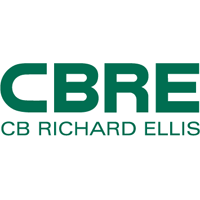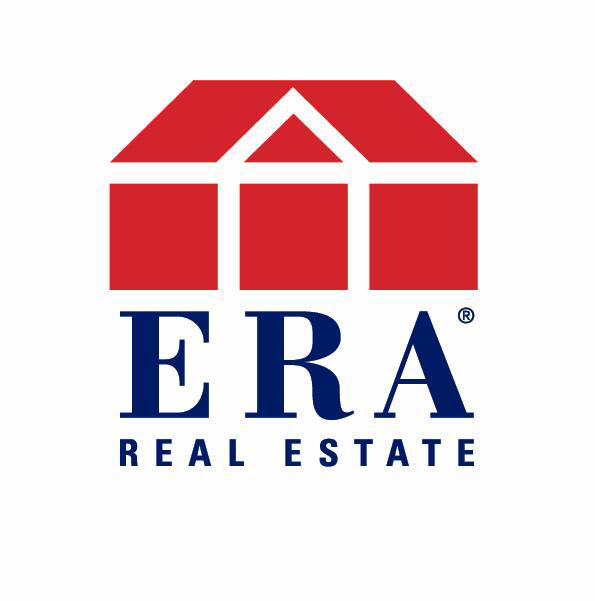 | |
Lalrea.Com (Locate A Local Real Estate Agent.Com) Real Estate In Metro Atlanta, Georgia
ICS Consumer Credit Improvement
Services a division of International Communication Systems, Inc. Our Purpose Our purpose is to provide consumers with detailed information to assist with improving their credit scores and to offer another credit alternative to prevent consumers from falling victim to costly credit repair scams. The information we provide will equip you with important credit information and allow you the opportunity to improve your credit yourself. You have now taken the first step to improving your credit score. The information you are about to read will improve your financial situation immediately if applied successfully. Our team of professionals are here to assist you. Don't hesitate to contact us at admin@icsgeorgia.com if you have any questions about our services. Topics Of Interest How To Use This Credit Improvement Information Credit Ratings and Report Credit Bureaus What Your Credit Report Reveals Public Records: Bankruptcies, tax liens, judgments and other filings Obtaining a Copy of Your Credit Report Knowing Your Legal Rights Repairing Your Credit Prepare a written protest to the credit bureau Keep a calendar Send a follow-up letter Request an updated credit report Compare the new report with the prior report Repeat the process Gaining Creditor Cooperation Study all the facts concerning each account and the nature of the negative ratings Contacting the creditor by telephone Confirming an Agreement with a Creditor to Change or Update a Negative Rating Confirming an Agreement with a Creditor to Pay Your Debts and Have Your Positive Credit Rating Restored Present a “win-win” offer Obtain an “open account” status Confirm your agreement in writing Honor your agreement Verify your credit upgrade Trying again Dealing With Serious Credit Problems How Credit Clinics Can Ease Bad Credit Bolstering Your Credit Record Tax Liens and Your Credit Rating Make sure the IRS sends you a Certificate of Release for each tax lien Conduct a complete lien search Review your credit report Add a Consumer Statement to your credit report Add a Consumer Statement Challenge a bankruptcy How To Use This Credit Improvement Information return to top It is the goal of this Credit Improvement System to assist you in improving your credit conveniently, efficiently and economically. Nevertheless, it is important for you to properly use this System if you are to avoid future problems. Always follow these instructions: 1. Carefully read all information, warnings and disclaimers concerning the forms in this System. If, after thorough examination, you decide that you have circumstances that are not covered by the forms in this System, or you do not feel confident about preparing your own documents, then you should consult with an attorney immediately. 4. Avoid reassures and “cross-outs” on final documents. 5. Correspondence forms should be reproduced on your own letterhead. You can create your own letterhead simply by typing or printing your name, address and telephone number on the top/center of the form, as shown below. [YOUR NAME] [YOUR ADDRESS] 6. Whenever the documents are to be executed by a partnership or corporation, the person signing should also print his/her name and title. 7. Always make copies of your important documents. If you do not have access to a photocopier, keep a copy of your draft, or make another copy yourself. Store all-important documents in a safe place and in a location known to your spouse, family, personal representative or attorney. Credit Ratings and Report return to top Since many of the things we want to buy must be financed or bought on credit, good credit is essential. A vast network of credit reporting agencies keeps track of every American who does business or buys on credit. Each time you apply for credit through a bank, store or credit card agency, the prospective lender typically checks your credit with one or more of these agencies before issuing you credit. If your credit becomes bad, it is nearly impossible to avoid detection. Credit Bureaus return to top There are many credit bureaus in the United States, but only three large regional bureaus – Equifax, Experian and Trans Union. The largest, Experian (formerly known as TRW), has processed over 35 million credit reports in the last year and boasts 50,000 business subscribers. Many businesses and potential creditors pay to obtain your credit information contained in credit bureau files. These businesses rightfully believe that the information contained in your credit file is a good indication of your creditworthiness. How you have paid other creditors in the past is an indication of how you may act in the future. The businesses also use the credit file to verify information on your credit application. Businesses that most often deal with the credit bureaus are the commercial banks, credit card companies, larger savings and loans, major department stores and finance companies. Utilities, hospitals, credit unions, oil company credit cards and checking and savings account information deal with credit bureaus less often. Usually the same businesses that receive information about you also provide information to the credit bureaus. When you submit a credit application to one of these businesses, the information in your application is forwarded to a credit bureau so that your credit file may be updated. The transfer of account information involves sending the credit bureau computer disks that contain account information and any changes and additions to be made to your credit file every month or quarter. This practice is intended to ensure that the credit bureau’s file are accurate and up-to-date. However, not all businesses report what they know about you to the credit bureaus, (And of those that do, not all report the entire contents of their files. Therefore, your file may be incorrect or out of date.) What Your Credit Report Reveals return to top Credit reports may vary slightly between agencies; however, most credit reports include personal identification information, account information, information obtained in public records, information about credit report request and a consumer statement. Personal identification information: Your full name; your last two addresses; your social security number; your date of birth; and your place of employment. Length of employment and income may not be reported. Please note that if you are self-employed, a credit bureau may incorrectly list you as unemployed. You will need to contact the credit bureau and instruct that your file be corrected. Account information: Credit issuer’s name; opening date of account; original balance/limit; current balance; terms of account; and the current status of the account. A specific code system is used to describe the status of each item. Public Records: Bankruptcies, tax liens, judgments and other filings return to top Credit report requests: Each time a creditor requests a copy of your report, it is recorded in your report. If numerous requests are made and no subsequent accounts are opened, other potential creditors may assume that your credit application was turned down. This may lead to some difficulty in obtaining credit. Consumer statements: A brief (100 words or less) explanation of any entry in your credit report that is written, and submitted to the credit bureau by you. Obtaining a Copy of Your Credit Report return to top Credit bureaus do make mistakes. Therefore, it is important to check your credit report periodically so that inaccurate information can be corrected. Information Required: Credit bureaus routinely require the following information: your full legal name; your current address; your former address; your social security number; your date of birth; and, if applicable, your spouse’s full legal name, social security number and date of birth. You may call the credit bureaus to inquire about the specific information they require at the telephone numbers listed on the following page. Fee if you have received a credit rejection within the past 60 days: None. Simply write a letter in the form of Sample Letter Number 1 to the credit bureau listed on the rejection letter and demand that the credit bureau provide you a free copy of your credit report. Fee if you have not received a credit rejection within the past 60 days: $8.00. It would be wise to call the credit bureau to confirm that the fee has not changed. Send a written request in the form of Sample Letter Number 2 to each of the credit bureaus listed below. Since the information compiled and maintained by the credit bureaus differs, it is important to contact all three credit bureaus, particularly if you suspect that incorrect or inaccurate information appears in your credit file. EQUIFAX Credit Information Services P.O. Box 740241 Atlanta, GA 303 Schaumburg, IL 60173 1-888-EXPERIAN (397-3742) TRANS UNION Corporation P.O. Box 97328 Jackson, MS 39288-7328 1-800-916-8800 Knowing Your Legal Rights return to top The Fair Credit Reporting Act (FCRA), 15 USC Sections 1681 through 1681t, protects you against credit abuse by granting you the following rights: 1. You may challenge the accuracy of your credit report at any time. 3. The credit bureau’s 30-day period begins when the credit bureau receives your notice of dispute, unless you send the credit bureau additional information during the 30- day period. In that event, the credit bureau may extend the deadline by 15 days. 4. If the credit bureau cannot confirm the adverse information or finds any error, it 5. If the credit bureau cannot or does not confirm the information you have challenged within a seasonable time period, it also must delete that information from your files. 6. If a creditor verifies the information and the credit bureau responds in a timely manner, the negative marks will remain on your record. However, if you maintain that the statements is inaccurate or incorrect, then you have the right to submit a brief statement (called a “Consumer Statement”), that sets forth your explanation of the credit dispute. Representatives of the credit bureau are available to assist you in writing a Consumer Statement. Once your Consumer Statement is finalized, it will appear on every copy of your credit report that is sent out. Repairing Your Credit return to top Review your personal information Once you have received a copy of your credit report, review it carefully. Check all spellings, numbers and dates. Then proceed to the “Summary” or “Account Profile” section of your credit report to determine whether it contains any negative information. Locate the “Summary” or “Account Profile” section on your credit report. This section contains a summary rating for each of your accounts. A summary may be positive, negative, or non-rated for each of your accounts. “Positive” means that your payments are all on time. “Negative” means you have a serious credit problem such as having defaulted on a debt. “Nonrated” means that you may have a few late payments, which could place you in a weak position, even though there is nothing strongly negative in your credit report. If you have any “Negative” or “Non-rated” ratings, then proceed to the section containing negative history remarks. Negative remarks may appear in the following four sections: Historical Status; Comments; Inquiries; and Public Records. Make sure you review them all. ..Locate the negative history remarks. ..Highlight or circle all of the negative remarks in your credit file. ..Locate the key to the coding symbols. ..Familiarize yourself with the coding symbols. ..Compare the highlighted or circled negative remarks to the coding symbols. To fully repair your credit, you must protest, and eventually remove, all negative or non-rated profiles. Prepare a written protest to the credit bureau return to top To repair your credit, you must challenge any negative remarks that appear in your credit file. You have the right to dispute any citation on your report if the information contained in that citation is inaccurate or incomplete. (Fair Credit Reporting Act 15 USC Section 1681). The only limitation to your dispute is that it should not be “frivolous or irrelevant.” To begin preparing your written protest, refer to the Sample letter Numbers 3 and 4. Remember to use a pen or type your letter and avoid erasures and “cross-outs.” Use photocopies of each document as worksheets, or as final copies. Create your own letterhead, as instructed previously. Do not try to explain all of the negative ratings in one attempt. Carefully list each negative rating that you want to challenge. Next, set forth an explanation for or comment about each negative rating. Even if the explanation is the same for all negative ratings, it is more effective if you repeat the same explanation several times for each negative rating. Be sure to include photocopies of any documents you provide to support your claims. These might include correspondence with your creditors, canceled checks indicating payment, receipts or other documents. Explanations for negative ratings could be: that your debt was satisfied and therefore should not be reported as a charge off; that the debt was paid, but the creditor failed to note this in your credit report; that a payment was delinquent due to a mix-up with the post office. For example, you change your address and bills were not received even though a change of address was furnished; or something else. Make a copy of your letter for your records. Send your letter certified mail with return receipt requested so that you can be sure the bureau receives it. It is also a good idea to include a copy of your credit report to make sure the bureau checks the right file. Refer to Sample Letter Number 3 when your credit report contains incorrect information. Refer to Sample Letter Number 4 if you are demanding a corrected and updated credit report. Keep a calendar return to top As soon as you mail your letter, log the date for each negative rating that you have protested. Keep related disputes together in a file with a copy of the letter, the credit report and any other documents that you include with it. Also calendar the date that the response is due. By law, credit bureaus must respond within 30 days. Send a follow-up letter If the credit bureau does not respond within 30 days, you should write a follow-up letter. Point out that federal law requires the credit bureau to respond to a consumer dispute within 30 days of the reminder, write a final follow-up letter. Refer to Sample Letter Number 6. Failure of the credit bureau to respond in 30 days entitles you to have any negative mark on your report deleted provided it was one that you challenged. Since many creditors won’t take the time or effort to defend the negative entry, you can eventually “repair” your credit through the default of your creditors. Do not be discouraged if the credit bureau does not respond. It is possible to eliminate negative marks simply by going through this process of disputing the negative Request an updated credit report At the end of every letter that you send to the credit bureau, ask them to send you an updated copy of your credit report. Also request that the credit bureau send the updated credit report to anyone else who inquired about your credit. 15 USC Section 1681j of the FCRA requires the credit bureau to send a free notification of any updates to anyone who has received a copy of the report during the six-month period prior to any corrections or addition to your credit report. Note: Credit bureaus are not required to send a copy of your entire report, but they will often do so because it is more convenient. Compare the new report with the prior report Most credit bureaus will send you an updated report. Compare carefully the updated report with the original one. Mark all improvements that you find. Highlight any negative rating that has changed to non-rated rating or any non-rated or negative ratings that have changed to positive ratings. Chances are that you will not get results on every protest the first time. But some progress is likely. Repeat the process return to top If negative ratings remain on your credit report, repeat the process. If a dispute about a negative rating results in a more negative rating than before, do not be discouraged. Go back to the beginning of the process and start again. You should put your credit record through this process at least twice before going on to the next phase. Gaining Creditor Cooperation return to top A credit bureau may not remove negative ratings if a creditor routinely cooperates with the credit bureau’s request (s) for verification. In this event, you will need the creditor’s cooperation to remove the negative ratings. You will have to persuade the creditor to soften its stance by either toning down or entirely deleting their remarks on your credit report. Create an accurate record of your dealings with the remaining creditors who still give negative ratings. List each creditor’s name, account number, negative credit remarks and any documents, correspondence or notes you have on your dealings with them. Study all the facts concerning each account and the nature of the negative ratings Write a letter to each creditor explaining your version of how the problem arose. Be specific and give all the relevant details, including full documentation. Be factual, but also appeal to the creditor’s sense of good will. Perhaps your company went bankrupt suddenly or you lost your job. Or perhaps you became ill and were unable to work. Remind the creditor that you eventually paid the delinquent amount. Appeal to the creditor’s compassion and request that the negative ratings be removed or that a statement be included that the account is current. Do not use lame excuses for late bill-payment habits. Use strong, compelling reasons. At the end of your letters always thank the creditors for their time and consideration. Refer to Sample Letter Number 7. Contacting the creditor by telephone If your creditor does not respond to your letters, use the telephone. This will allow you to interact with the creditor in a more personal way. Before you call, study the information you have gathered from your credit report, your creditor’s responses, and the accurate record of negative ratings that you compiled. Then write a sample outline of every point that you want to make during your call. Try not to become angry. Remain calm and be polite. If your first telephone call does not produce the results you want, do not give up. Be persistent. Ask to speak to another person or a manager. Different people will react to you differently. By speaking to more than one person, you may find someone who will relate to your problem more positively. Confirming an Agreement with a Creditor to Change or Update a Negative Rating Send the letter, along with a self-addressed, stamped envelope. The creditor should sign the letter and return it to you for your own records. This letter is important if the creditor forgets to change your status or later changes his or her mind about helping you. In that event, you can send the letter to the credit bureau yourself to repair your credit. Confirming an Agreement with a Creditor to Pay Your Debts and Have Your Positive Credit Rating Restored It is always best to avoid having a debt turned over for collection. If your account has been sent to a collection agency, deal first with the original creditor. A collection agency receives a percentage of what it collects from you so it may be less willing to negotiate. Rather, a collection agency will try to get as much cash as possible from you. The creditor, on the other hand, may have already given up any expectation of full payment. By dealing with the creditor, you may have more flexibility to negotiate the time or the amount to pay. If you cannot avoid negotiating with the collection agency, use the following points. Which also apply to dealing with a creditor. Present a “win-win” offer Keep in mind that your goal is to trade money for a positive rating on your credit report. Perhaps you can offer to set up a payment schedule in exchange for a promise to improve your credit rating. For example, you could agree to pay the entire amount owed in 12 monthly installments in exchange for the creditor agreeing to recognize your new bill paying commitment with better credit ratings. Be specific. Alternatively, you may agree that after three months of punctual payments a negative rating could be raised to a non-rating. Perhaps after six months of regular payments, the non-rating could be lifted to a positive rating. Obtain an “open account” status Even if you are making regular payments, a potential creditor may react negatively if your account is closed to further purchases. Therefore, when you are negotiating an offer with your creditor ask him or her to reopen your account while you uphold your end of the agreement. You can be very persuasive if you offer to pay the entire debt perhaps with interest or a service charge added. The “win-win” negotiation procedure can occur via a telephone conversation. Once you have reached a verbal agreement, it is imperative that the agreement be put in writing. Draft a letter that carefully lists all the points of agreements. Refer to Sample Letter Number 10. Do not exaggerate, embellish or take any liberties. Then send the letter along with a stamped, self-addressed envelop. Once the creditor signs the agreement and returns it to you, it can become part of your credit record. Now that you have a written agreement, you need only fulfill it and your credit rating will be restored. So be punctual. Make every payment on or ahead of time. If your ability to meet the payment schedule in the agreement is threatened by unemployment or illness, inform your creditor right away, before you mail any payments. Discuss your plans for meeting the payments with the creditor and explore ways to solve your temporary setback. Verify your credit upgrade return to top Remember to order an updated copy of your credit report to verify that the creditor has honored his or her side of the agreement and made the promised changes. Allow a reasonable time period from the date the creditor agreed to make the change. If the changes have not been made, you should immediately telephone the person with whom you made the agreement and remind that person of his or her promise. If the creditor still fails to upgrade your credit rating, then you can effectively dispute the information on your credit report by sending the credit bureau a copy of the signed agreement. Trying again If a creditor will not cooperate with you and the negative rating remains in dispute, then a Consumer Statement may be the only tool that can work in your favor. However, you should remain persistent. Wait a few months and repeat the process. After a lapse of time, the situation may have changed. You may find a more receptive person who is willing to help you regain a good credit rating. Dealing With Serious Credit Problems return to top If, in your financial past, you have encountered serious credit problems, such as bankruptcies, court claims, repossessions, or foreclosures, then these negative ratings may stick to your credit report, even after you try every method discussed above. For these serious credit problems, remain patient. You will be surprised at how much you can accomplish through persistence. Be assured that as these events drift further into How Credit Clinics Can Ease Bad Credit return to top This unique Credit Repair System is designed to help you repair your bad credit yourself. Credit clinics use the same process. They operate under the same reasoning discussed above – that each item on a credit report must be proven and that every negative rating on a credit report can be denied or challenged at any time. Upon receipt of a denial or challenge, the credit bureau must then reinvestigate. If the item cannot be reverified within 30 days, it is automatically removed from the file. A credit clinic will instruct you to send a letter to the credit bureau similar to those discussed previously. After a few months, the credit clinic will have you send another letter to the credit bureau starting the process all over again. These credit clinics understand the value of persistence. They will encourage you to continue this process until all of your negative items are removed. Should you tire of the process, the credit clinic will recommend that you submit a Consumer Statement as discussed previously. Bolstering Your Credit Record return to top The law remains unclear about adding favorable items to a credit report. However, the FTC has advised credit bureaus that, where a report has resulted in unfavorable action against you; you should be allowed to add to your credit report, thereby creating a more complete and balanced picture of your credit history. Consequently, most credit bureaus will, for a small fee, contact any creditor you name and add that creditor’s information to your file. The charge will usually run $2 to $3 per item. Tax Liens and Your Credit Rating return to top A tax lien on your credit report will definitely hurt your chances when applying for significant credit, such as a loan to buy a home, business, car, boat or any other major purchase. It may also prevent you from obtaining credit cards. Make sure the IRS sends you a Certificate of Release for each tax lien return to top Once you have fully paid your taxes, the IRS must send to you a Certificate of Release of Federal Tax Lien (Form 668Z) for each office that has a tax lien on file. This may include the clerk of your city, town or county, the federal district court nearest where you reside and wherever real estate transactions for your locale are recorded. If you have moved, there may be liens filed where you originally lived. There may also be several tax liens for the same tax problems if the problems extend over several years. Conduct a complete lien search return to top To ensure that you obtain a Certificate of Release for each tax lien filed, you must conduct a complete lien search. This can be accomplished by: (1) requesting that the IRS send you copies of every lien the IRS filed against you; (2) having a commercial lien search service review the public records; (3) conducting your own lien search at the public recording office; or (4) reviewing your credit report. Be aware, however, that a credit report may overlook some tax liens. Review your credit report For each recorded lien (not noted as discharged) you must insist that the reporting agency contact the IRS or check the public records to confirm that the lien has been released. You may also send the credit bureaus copies of the Certificate of Release of Federal Tax Lien. Follow up with the credit bureau to make sure your credit report reflects the discharge of all tax liens against you. Challenge a tax lien Bankruptcy and Your Credit Rating return to top Bankruptcies may stays on your credit report for 7 to 10 years. While bankruptcy will obviously damage your credit rating, it may be less damaging than many negative marks on your credit report. For that reason, you should file bankruptcy before your credit deteriorates to the point you have a heavily spotted credit report. The one mark “bankruptcy” may be far less harmful. Add a Consumer Statement return to top The events leading up to your bankruptcy can have an important effect on your credit report. For example, if you maintained a good credit history, but then fell victim to a financial disaster, such as your business failing, leaving you with an unmanageable bank loan that necessitated your bankruptcy. If you are otherwise a prompt bill-payer, it is in your best interest to advise potential creditors about the circumstances leading up to your bankruptcy. As discussed above, you should submit to the credit bureau a Consumer Statement that describes the event that led to your filing bankruptcy. Also, comment about your otherwise good credit history at the time of the devastating financial event. Finally, state that the financial problem has been corrected and that you are financially stable. Challenge a bankruptcy return to top Click Here Receive Your Free Credit Score This information may not be reproduced or copied without written permission of ICS. |

Articles: |
|
| |







